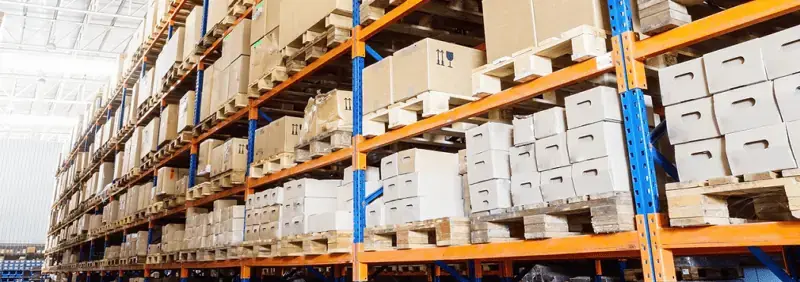Home / Our thinking / Insights / How Usage Based Insurance and technology are driving automotive
How Usage Based Insurance and technology are driving automotive

Table of contents
The ‘black box’ of InsurTech – usage based insurance in the automotive industry
For many years, insurance companies calculated consumer pricing based on generic and dated information associated with a driver’s characteristics. The effect was that it unfairly penalised some drivers, particularly younger motorists, which in some cases made premiums unaffordable. But this is changing as customers demand more customised products and pricing. Enter usage based insurance.
As insurance technology – also known as InsurTech – began to develop, insurance companies began asking themselves ‘what if the premiums are customised based on an individual’s driving style? And ‘how can we quote a more competitive rate while properly managing the risk’? One popular solution has been a growth in usage based insurance (UBI), also known as pay as you drive (PAYD) insurance.
UBI in the automotive industry is a type of vehicle insurance that is priced on the basis of a fixed cost for the car’s stationary risk, such as fire and theft, and a flexible element which is dependent on the driver’s behaviour. Cutting-edge, artificial intelligence enabled technology provides insurance organisations with an accurate picture of how their clients drive. The result is that many drivers are rewarded for their good on-road behaviour through declining premiums and more money in their pockets.
How telematics factors in
Usage based insurance is commonly powered by in-vehicle telecommunication (telematics)-technology, which can be self-installed using a plug in-device or already integrated in equipment from a car manufacturer. As well as the ability to align insurance premiums with consumer need, telematics can help to bring driving-style improvements to boost fuel economy, location-based services such as stolen-vehicle recovery, real-time tracking, vehicle-finder services and vehicle-maintenance alerts.
Self-installed telematics include many different devices, including:
- A simple smartphone app is one of the most popular. Capable of autonomously detecting car journeys, smartphone apps provide trip scoring data based on the driver’s behaviour and the driving conditions – effectively enabling a phone to be a telematics sensor and transmitter. Behavioral insights include how often a driver uses their phone while behind the wheel – a significant cause of traffic accidents – helping insurers to manage risk and become even more competitive. Smartphone apps can also generate pro-active notifications including traffic and weather alerts
- A smart tag is another simple way to collect and transmit data. Mounted on a car dashboard, it uses a built-in SIM card, providing a low cost alternative to a smartphone app
Professionally installed telematics devices tend to provide more reliable performance data. A black box tends to be the preferred usage based insurance option, which typically includes additional sensors such as accelerometers for precise measurements, an embedded microprocessor, a Bluetooth module for connectivity, a multi-constellation high-performance GNSS, eSIM, and a six-axis accelerometer and gyroscope. Black boxes tend to score highly on road safety, robustness against tampering and usability in all weather conditions.
From consumer to commercial - artificial intelligence is changing the game
Usage based insurance has many applications in a commercial environment; including obtaining a more accurate picture of where particular ships navigate and how much time is spent at sea, as well as comprehensive fleet management. Artificial intelligence (AI) is increasingly being used to process the data that is gathered to guide fast and effective decision making.
By adopting programmes that can track multiple data sets on all of a fleet’s vehicles, AI powered telematics can predict what is likely to happen next and empower fleet managers to make the best decisions with regard to scheduling, routing, pricing and driver accountability. Instead of manually pouring over information to generate meaningful insights, machine learning can automatically highlight other important alerts such as car or truck theft, or vehicle misuses like identifying car rental drivers using cars for commercial use. Conclusions based on the aggregated and analysed collected data can lead to significant operational cost savings, including the ability to price insurance much more effectively.
A growth opportunity
According to UnivDatos Market Insights, the global automotive usage-based insurance market is expected to grow at a CAGR of 24.4% from 2021-2026 to reach US$ 93 billion by 2026. Based on region, North America is expected to be the most lucrative segment. Technological innovation, the presence of key players, and high demand for interconnected services significantly contribute to the North America market size and growth potential.
Insurance technology is increasing insurance sales while improving the consumer experience at the lowest cost. By harnessing large volumes of data from real-time sources, insurers are able to develop new products and offer dynamically priced premiums to individual and commercial customers. The use of artificial intelligence and machine learning ensures intelligent use of data, increasing underwriting profitability and providing a valuable market differentiator.
At NashTech, we deliver innovative solutions with our agile, solution-focused approach, leveraging mainstream and emerging technologies to build custom software products that are robust, scalable and secure. As a trusted technology partner, we work in close collaboration with you to ensure you realise the value of the software earlier. Get in touch today to find out more.
For more insight into how InsurTech is using automated intelligence to improve the customer experience, download using automated intelligence to improve the customer experience, our latest eBook.
Suggested articles

New Technology In The Insurance Industry
The insurance industry is undergoing a period of profound disruption. Demanding customers, new competitors, changing regulations, struggling legacy...

Last mile delivery technology and challenges
According to GlobalData, online retailers had a remarkable year in 2020, seeing a whopping 65% gain in cumulative market capitalisation over 2019. In...

Insights from a dynamic panel discussion on legacy modernisation in retail
Legacy modernisation in retail The retail industry finds itself at a crossroads between tradition and innovation. Legacy systems, once the backbone...